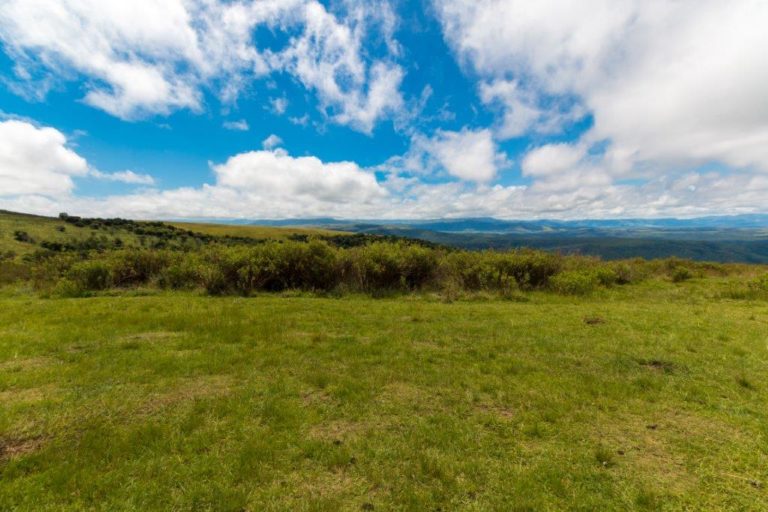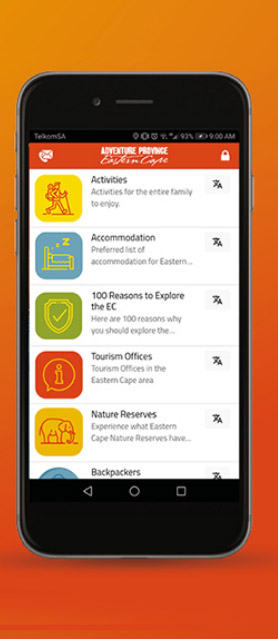
Karoo Heartland
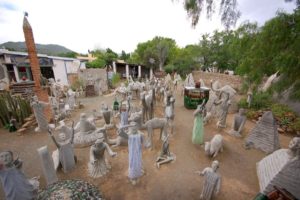
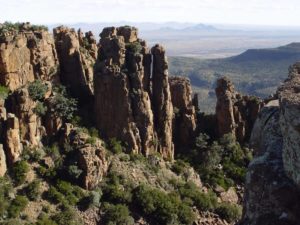
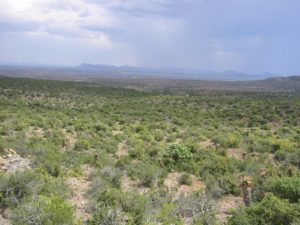
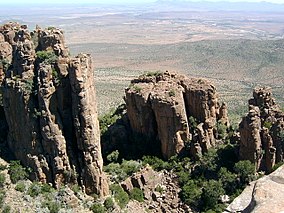
Get Out And About and Explore!
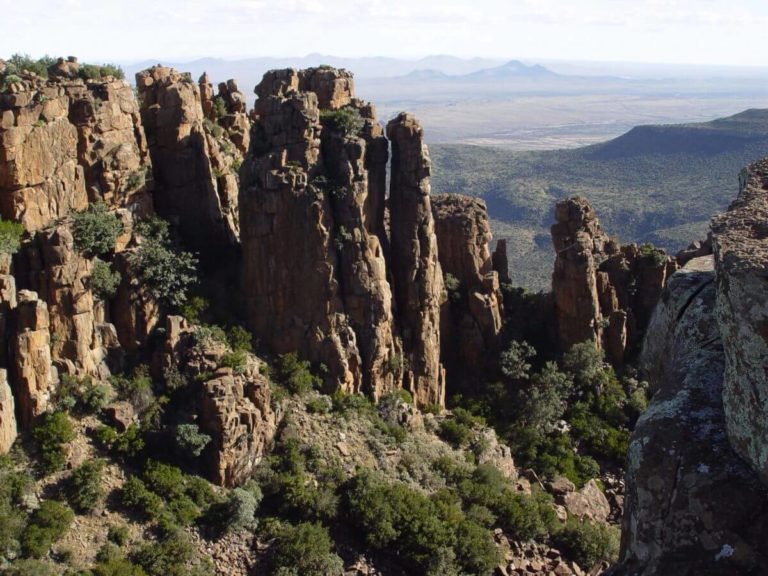
Valley of Desolation – Graaf-Reinet
The Cradock Four
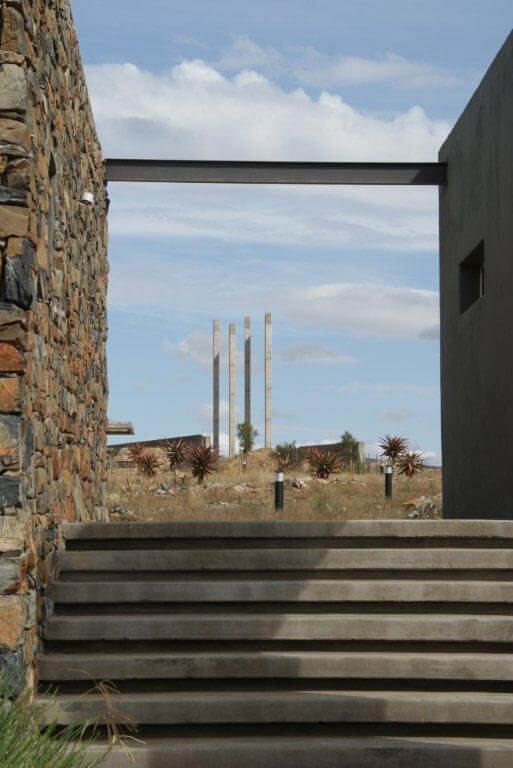
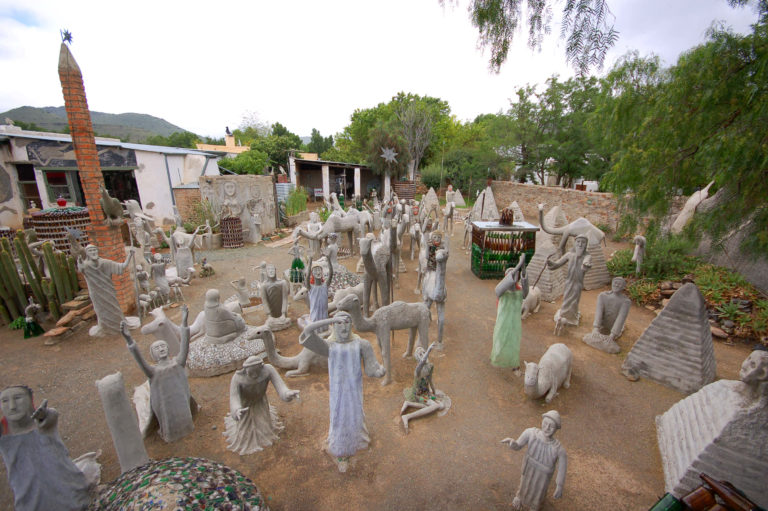
The Owl House
The Owl House in Nieu Bethesda is one of the main reasons visitors stray off the N9 National Road past Graaff-Reinet. The arch leading into the Camel Yard and the many cement owls with glass bottle eyes that hold vigil on the boundary distinguish the place as being distinclty different from anything else.
A work of outsider art The Owl House was created by Helen Martins between 1945 and 1976. Driven to despair by the dullness of her daily life, she took steps to transform her world with light, colour and texture. Known by the locals as Miss Helen, she employed local labourers, most notably Koos Malgas, to help her build Camel Yard and the many inspiring sculptures of mermaids, camels, and pilgrims jouneying to the east. Basic materials – cement, glass, mirrors and wire were transformed by Miss Helen’s marvellous imagination into a magical, secret world. The interior walls of her home were painted in bright colours overlaid with a layer of crushed glass. At night the Owl House came alive, as candle and lamp light danced off the many mirrors that she shaped for her home. Inspired by her work, playwright, Athol Fugard wrote the Road to Mecca.
Let the magic of the Owl House touch your life on your roadtrip through the Karoo Heartland.
Operating Hours: Mon – Sun: 09h00 – 16h00
Call: 049 841 1733 for more information
Schreiner House Museum
The Schreiner House museum in Cradock is a faithfully restored cottage, containing artifacts and information about Olive Schreiner (writer of Story of An African Farm, feminist, liberal and ahead of her time); a small but precious collection of some famous old publications; as well as the superbly maintained home of Olive Schreiner.
The conference room at the back houses well annotated boards about the Karoo – it’s geology, fauna and flora and fascinating information about the political history of Cradock and its people. Well worth a visit!
Operating Hours: Mon – Fri: 08h30 – 16h30
Call: 048 881 5251 for more info
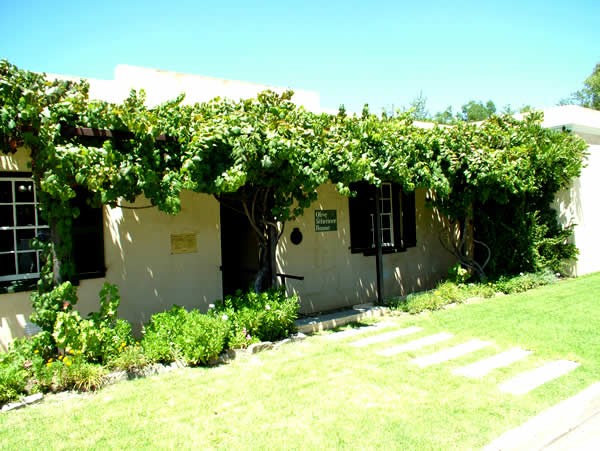
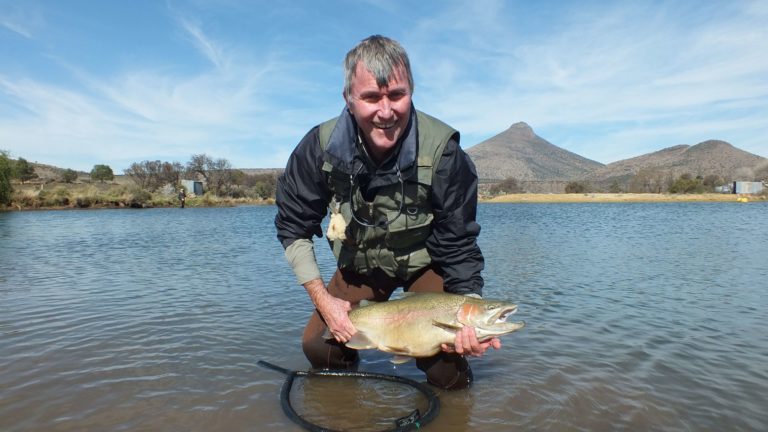
Fly Fishing Magic – Somerset East
Cookhouse
The name of this small town is said to have originated in the late 1700’s when Suzanna van Aardt supplied provisions from her “Cookhouse” to transport riders waiting to be able to cross the Great Fish River. Cookhouse is sited on what was once the border between the Cape Colony and the Xhosa territories, and the area was visited and written about by early explorers such as Gordon, Sparrman, and Le Vailant. Cookhouse has a famous railway station, once vital and bustling, and now, though still in use, a shadow of what it was in its heyday. It also has much for the history buff; the Slachter’s Nek monument, on the site of the infamous hangings, the Thomas Pringle cairn, the monument erected to commemorate the Fallen Heroes of the Struggle, and the Fairworld Fine Wool Museum, showing the history of farming and wool production in this rich farming area.
FAIRWORLD FINE WOOL MUSEUM – http://www.somerset-east.co.za/list/museums/attractions/somerset_east
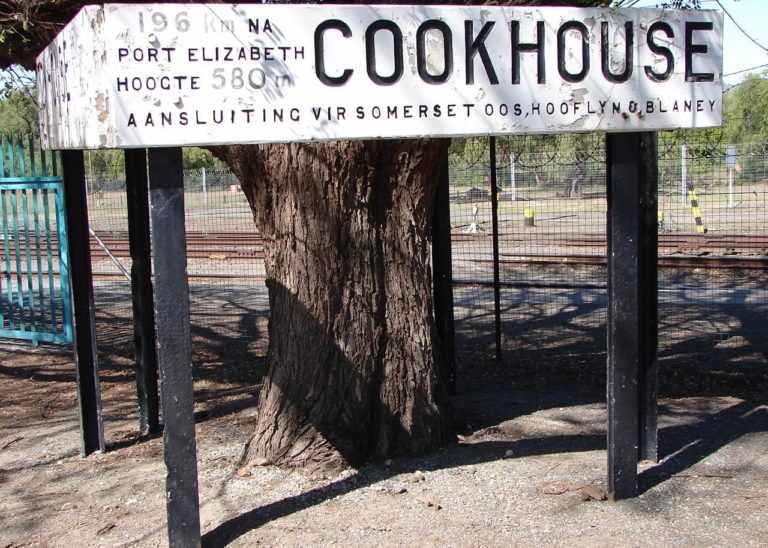
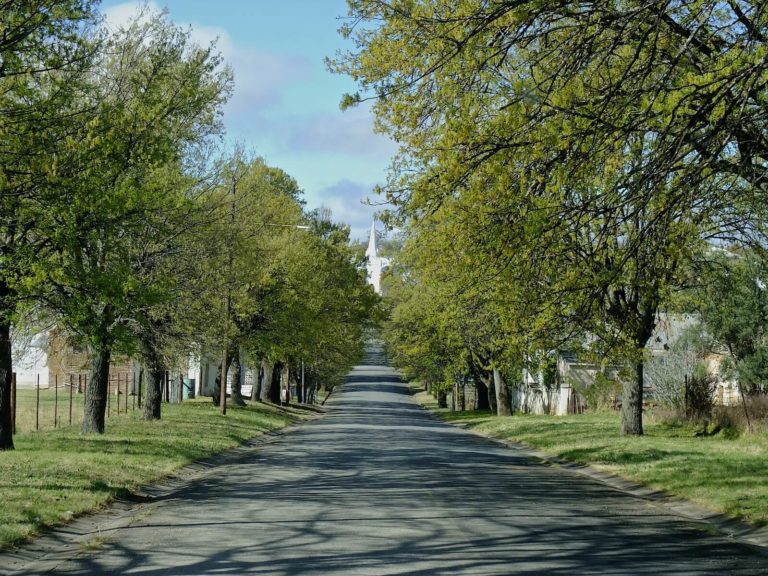
Somerset East
Somerset East, founded by Lord Charles Somerset in 1825, lies at the foot of the Boschberg Mountains. It’s a quaint, serene little town that is as famous for the surrounding natural beauty as it is for its many beautiful provincial heritage sites. It is on the Blue Crane Route that follows the national road R63 from Pearston, via Somerset East, to Cookhouse. The forested, mountainous backdrop creates a dramatic setting for the town (which is within sight of no less than 16 waterfalls). This is where you’ll find the thickly wooded Boschberg Nature Reserve, with its popular hiking trails – including a 15 km circular route to an overnight hut at the summit of the mountain. As the Route’s name suggest, Somerset East is an excellent bird-watching destination – other outdoor adventures include trout fishing on five local dams, as well as rainbow and brown trout fishing in the Glen Avon Waterfall pools.
The highly rated 9-hole golf course, Golf Central is said to be one of the most beautiful in the country. Amongst the many noteworthy buildings in the town are the Old Wesleyan Chapel, which now houses the Somerset East Museum, and the officers’ mess, which now houses the largest collection of paintings by the renowned South African artist Walter Battiss. Annual events include the Biltong Festival, which started in 1991, the Bruintjieshoogte Marathon, Bruintjieshoogte Cycle Tour (run between Pearston & Somerset East) and the Spring Rose & Flower show – Somerset East is known to produce some of the finest roses in the country.
FISHING / FLY FISHING – http://www.somerset-east.co.za/list/fishing/activities/somerset_east
HORSE RIDING – http://www.somerset-east.co.za/list/horse_riding/activities/somerset_east
HIKING – http://www.somerset-east.co.za/list/hiking_trails/activities/somerset_east
MOUNTAIN BIKING – http://www.somerset-east.co.za/list/mountain_bike_riding/activities/somerset_east
SOMMERSET EAST MUSEUMS – http://www.somerset-east.co.za/list/museums/attractions/somerset_east
Cradock
The Great Fish River cuts through the little Karoo town of Cradock on its way to the Indian Ocean off the Eastern Cape coast. Since 1975, Cradock has had the pleasure of a major river flowing past its downtown suburbs, filling up the Victorian furrows and bringing life to this part of the Grassy Karoo. Cradock began life in the early 1800s as the last stop you made before you ventured into the dry hinterland on your way north. You fixed your wagon wheels here, you loaded up with supplies and you had the local blacksmith beat out a few necessary tools needed on such an epic journey. Today, travelers still overnight in Cradock before heading for their coastal destinations. Many bus tours also have Cradock firmly on their cross-country itineraries and visitors love to walk its streets and marvel at the Victorian Karoo architecture. This normally blue-collar Karoo settlement comes alive when the Fish River Canoe Marathon happens in early October, and more than 3 000 fit, strong sportsmen and women and their friends hit town. It is three days of fun on the water, and out of it and there is not a room to be had in Cradock during this time.
Cradock’s historic heroes are legendary. The indomitable Olive Schreiner, author of Story of an African Farm and an early women’s rights campaigner, spent many of her early years in the area. More recently Matthew Goniwe, the anti-apartheid activist and popular local teacher, made Cradock the national focus of the Struggle when he led rent and consumer boycotts locally. Tragically, he was murdered by the apartheid regime along with three other activists, who together are known as the ‘Cradock Four’.
CAT CONSERVATION – http://www.karoocats.org/
HEALTH AND WELLNESS – https://www.facebook.com/theafricanangels
HIKING – http://www.thegreatkaroo.com/listing/cradock_excursions_salpeterkop_hike
MOUNTAIN ZEBRA NATIONAL PARK – http://www.thegreatkaroo.com/listing/mountain_zebra_national_park
WALKING TOUR – http://www.thegreatkaroo.com/listing/a_stroll_round_cradock_town
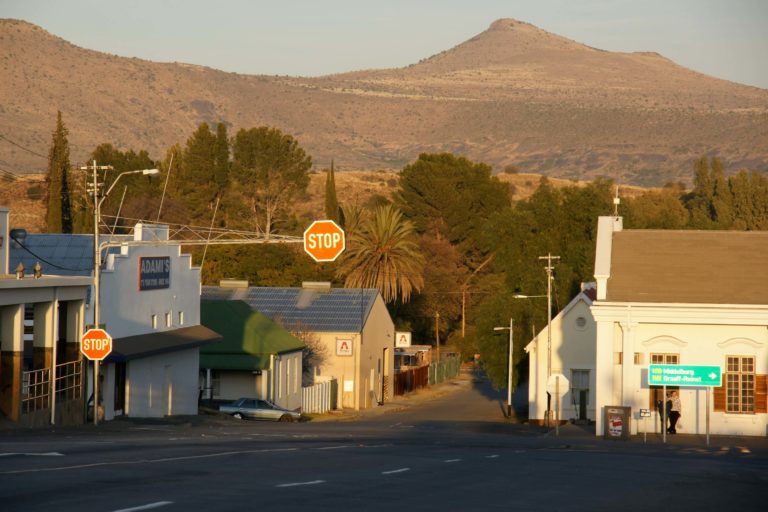
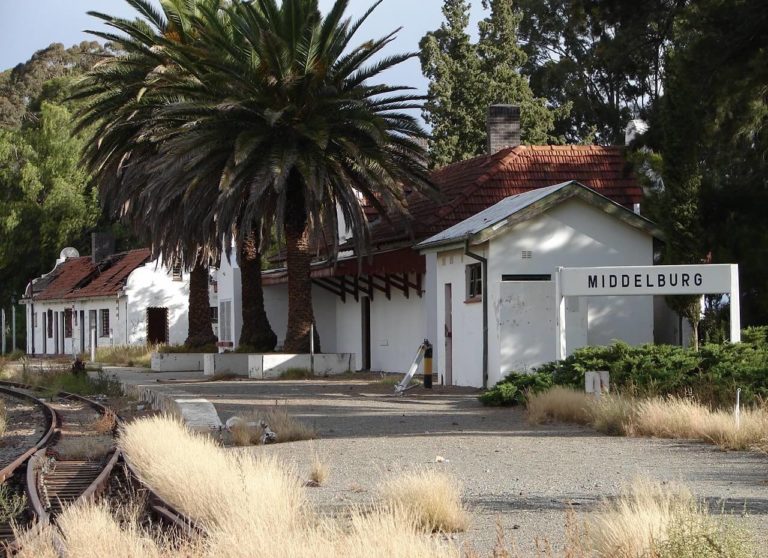
Middelburg
Surrounded by mountains in the heart of the Great Karoo, Middelburg is unique, yet similar to the average Karoo town. The area is recognised for its herbal plant life that grows naturally in the fields, and is also one of the few and best places in the world where fossil life has been discovered as well as San Rock Art in caves from the first known human inhabitants, the San Bushmen. Scenic beauty is the town’s main asset, with open spaces, Karoo sunsets, stargazing, fresh air and snow-capped mountains during the winter months.
HIKING, WALKING, MOUNTAIN BIKING, CLIMBING, ROCK ART, FOSSILS ETC – http://www.thegreatkaroo.com/listing/transkaroo_adventures
Nieu Bethesda
Nieu Bethesda is a mountain village 55 km to the north of Graaff-Reinet, in a valley with the Kompassberg, South Africa’s highest free-standing mountain as a backdrop. It was established by the Dutch Reformed Church in 1875 and given a biblical name by the Rev Charles Murray of Graaff- Reinet. In the twentieth century it began to wither as people left the rural areas. It was so quiet with so little traffic that the council leased certain streets for growing potatoes. During this time one inhabitant, Helen Martins, began creating fantastic concrete sculptures in her house and yard, often of owls. She changed the interior of her little house by embedding crushed glass into the walls to bring in more light. The community sometimes looked askance at her eccentric activities. She committed suicide in 1974 because of her failing eyesight but her creations saved her village.
The playwright Athol Fugard wrote a play about her life called “The Road To Mecca”, which was later filmed. People then flocked there to see her house, known as the “Owl House” and discovered that there is a lot more to Nieu Bethesda, such as the stunning setting, the streets lined with pear trees, the beautiful church and the dry river bed where fossils can be found.
OWL HOUSE MUSEUM – http://theowlhouse.co.za/
BLAAUWATER RAILWAY EXPERIENCE – http://www.thegreatkaroo.com/listing/blaauwater_railway_lootsberg_pass DAMESFONTEIN MUSEUM – http://www.thegreatkaroo.com/listings/attractions/eastern_cape/great_karoo/nieu_bethesda HIKING AND BIKING – http://www.ganora.co.za/
MEDICINAL WALK – http://www.ganora.co.za/
FARM EXPERIENCE – http://www.ganora.co.za/
ROCK ART AND FOSSILS – http://www.ganora.co.za/ and http://www.ectour.org.za/listing/kitching-fossil-exploration-centre
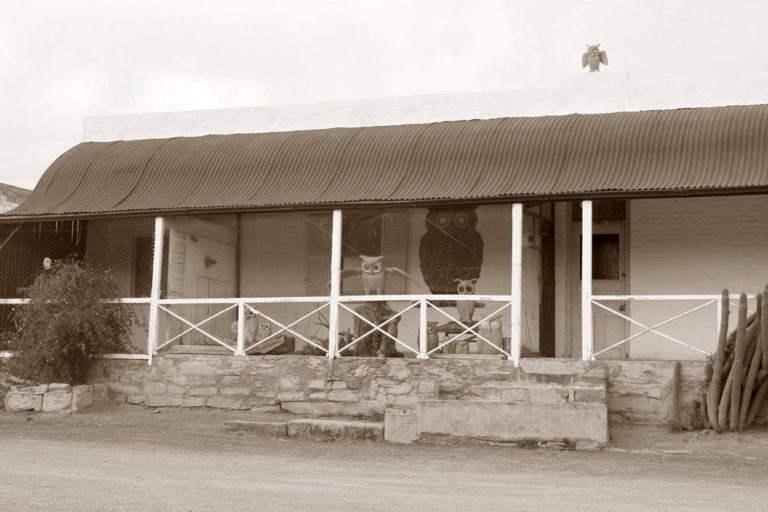
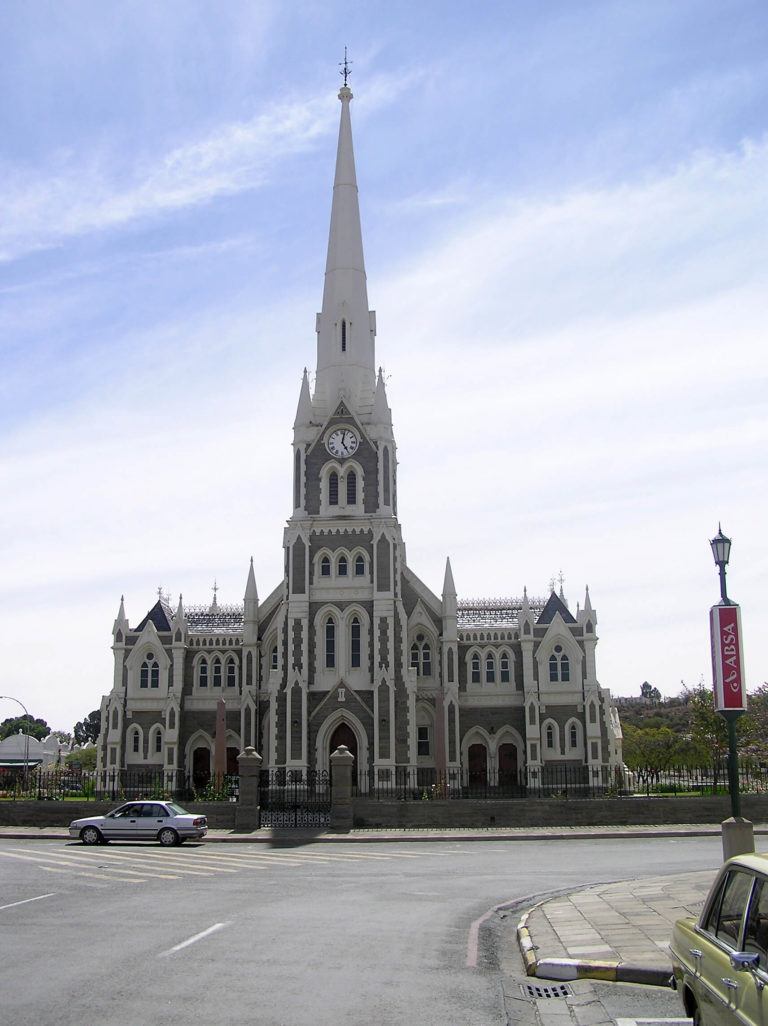
Graaf Reinet
Set in a curl of the Sundays River, the Karoo town of Graaff-Reinet is the fourth oldest settlement in South Africa and has seen more than two centuries of travelers, adventurers and prospectors pass through its streets. Today it is a vibrant centre for tourism, game farming and traditional agriculture. Graaff-Reinet is the only town in South Africa to be surrounded by a national park – Camdeboo National Park. Graaff-Reinet has been a traveler’s oasis in South Africa’s semi-arid desert, the Karoo, for more than two centuries, since it was founded in 1786. It’s a stylish town, with at least 200 historical buildings, restored pre-Victorian homes in almost every street and a collection of museums and galleries celebrating its past. Tucked into a bend in the Sundays River, Graaff-Reinet is best viewed from the heights of the Camdeboo National Park. From here, you can also see the Valley of Desolation and get a good sense of the utter vastness of the Great Karoo. This remarkable town lies on the western frontier of the Eastern Cape. It has bred many famous people, like the charismatic and eloquent founder of the Pan Africanist Congress, Robert Sobukwe, who spent most of the 1960s detained by the apartheid government on Robben Island. Another son of Graaff-Reinet was Anton Rupert, the billionaire who helped restore and build the vibrant community of his home town.
Modern Graaff-Reinet is based on tourism, game farming and traditional stock like Merino sheep and ‘white gold’: angora goats, which give mohair. Holding sway in the centre of Graaff-Reinet is the magnificent Victorian Gothic Dutch Reformed mother church, which looks a lot like Britain’s Salisbury Cathedral. A local farmer cut, prepared and donated all the stone for this great building.
MOTOR AND QUAD BIKING – http://www.graaffreinet.co.za/list/adrenalin/activities/graaffreinet
CYCLING – http://www.graaffreinet.co.za/list/adrenalin/activities/graaffreinet
FISHING – http://www.graaffreinet.co.za/list/fishing/activities/graaffreinet
HIKING – http://www.graaffreinet.co.za/list/hiking_trails/activities/graaffreinet
GAME VIEWING – http://www.graaffreinet.co.za/list/reserves_and_conservation/activities/graaffreinet VALLEY OF DESOLATION – https://www.sanparks.org/parks/camdeboo/default.php
MUSEUMS – http://www.graaffreinet.co.za/list/museums/attractions/graaffreinet
Jansenville
This little town of Jansenville owes its origins to the Dutch Reformed Church that formed a parish there in 1854 and was named after the last Dutch Governor of the Cape. Jansenville is north of the Zuurberg Mountains in an area known as the Noorsveld, after a cactus-like succulent that abounds in the district. Between Jansenville and the Zuurberg to the south is a plain that marks the northern boundary of the Addo Elephant National Park, while to the north are some hills which are a scenic drive and, at the summit, shortly before the giddy descent down the Ratelskloof Pass, one has a spectacular view across the Camdeboo plains to the peaks of the Sneeuberg.
Jansenville has a number of fine buildings, dominated by the large Dutch Reformed Church heritage site, a building in the basilican style made of local stone. The Anglo-Boer War fort north of the town attests to the guerilla activity in the area at that time.
MOHAIR EXPERIENCE MUSEUM – http://www.thegreatkaroo.com/listing/the_mohair_experience_museum SID FOURIE HOUSE MUSEUM – http://www.thegreatkaroo.com/listing/sid_fourie_house
ANGLO BOER WAR FORT – http://www.thegreatkaroo.com/listing/the_anglo_boer_war
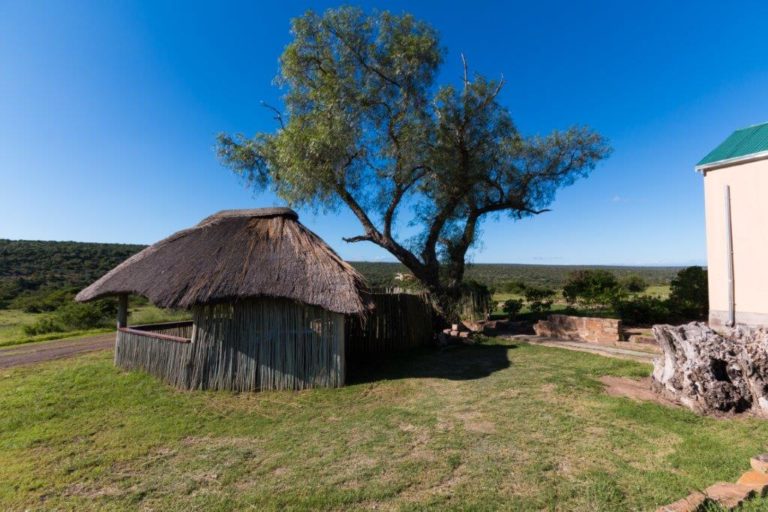
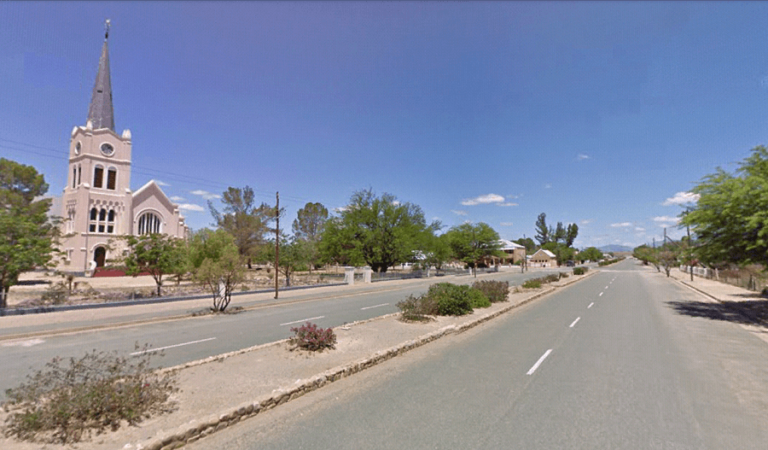
Steytlerville
Situated in the western parts of the Eastern Cape, Steytlerville is the home of peace and tranquility. Here one can rest, relax, refresh yourself and recharge the inner batteries of your soul, while exploring, enjoying yourself and indulging your need for some unusual entertainment. Steytlerville lies at the entrance to the eastern parts of the Baviaanskloof and showcases a host of architectural gems like quaint Edwardian- and Victorian-era houses with tin roofs and large street-facing verandas complete with broekie lace and stained glass windows.
BAVIAANSKLOOF WORLD HERITAGE SITE – https://www.visiteasterncape.co.za/parks/baviaanskloof/
MUSEUMS & MONUMENTS– http://www.baviaans.co.za/page/steytlerville_eastern_cape
STEYTLERVILLE FOLLIES – http://www.karroohotel.co.za/
Willowmore
Willowmore was officially established in 1874 after starting out as a trading centre on the farm, The Willows. According to some, Willowmore was named after William Joseph Moore, who occupied the farm “The Willows” on which the town was laid out. More romantically, there are others that believe it was named by a farmer who combined his wife’s maiden name, Petronella Catherina Moore, with a large willow tree that stood close to the house.
For years, farming has been a main source of income for those living in the area and since the late 1900’s it has been one of the biggest mohair producing areas in the world. The town is one of the few in the area not to have to worry about water as a plentiful supply is obtained from boreholes on the farm Wanhoop, 26km from town. Even though Willowmore is considered as the western gateway to the Baviaanskloof it is a worthwhile destination in its own right, offering the visitor numerous places of interest and exceptionally friendly people. Add to this a crime free, safe and secure environment, you have found the ideal Karoo holiday destination.
BAVIAANSKLOOF WORLD HERITAGE SITE – https://www.visiteasterncape.co.za/parks/baviaanskloof/
HIKING, 4X4 TRAIL, GOLF & BIKING – http://www.finchleyfarm.co.za/page/home and http://www.baviaans.co.za/listings/baviaanskloof/activities/hikingtrails
